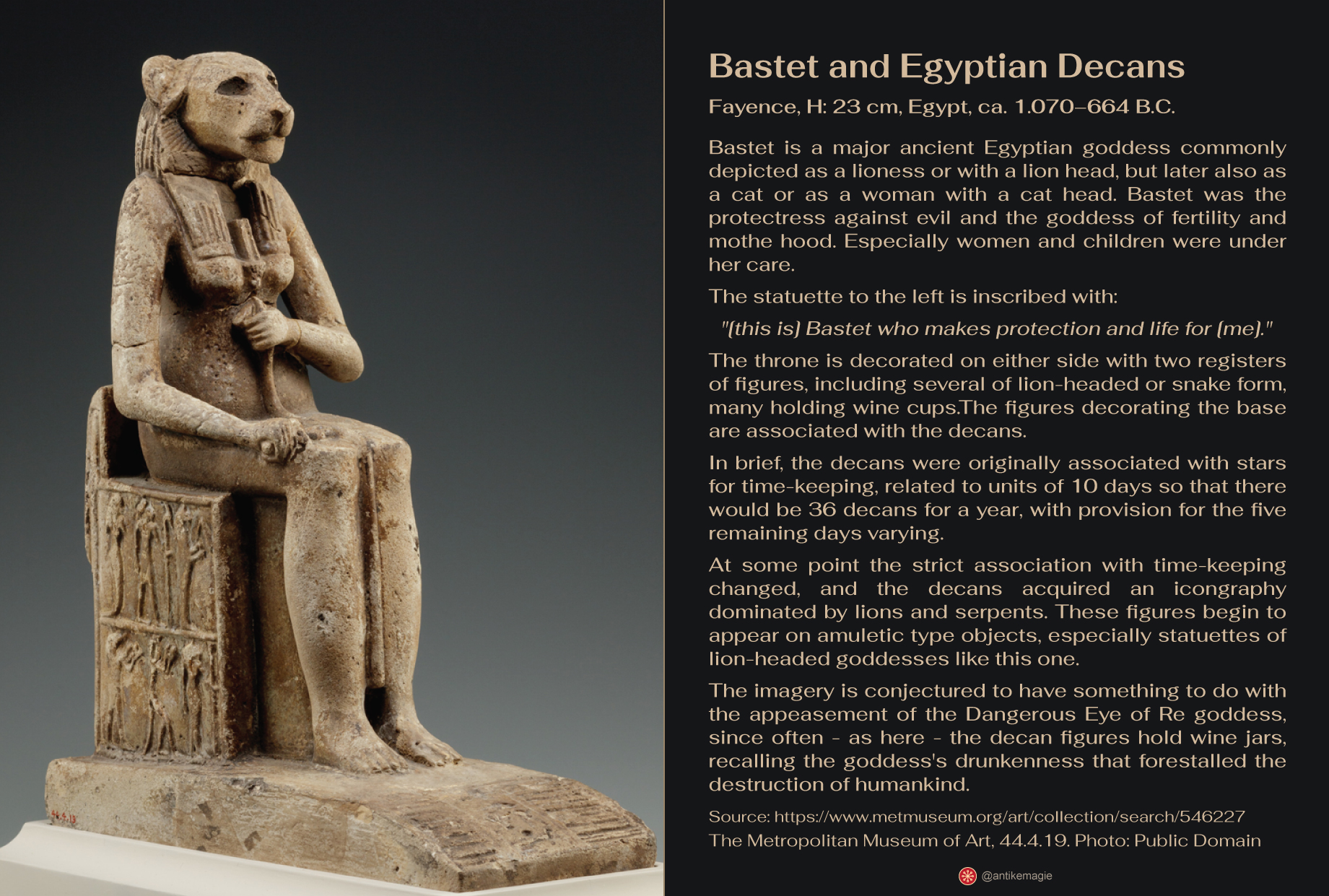Bastet is a major ancient Egyptian goddess commonly depicted as a lioness or with a lion head, but later also as a cat or as a woman with a cat head. Bastet was the protectress against evil and the goddess of fertility and mothe hood. Especially women and children were under her care.
The statuette seen here is inscribed with: “[this is] Bastet who makes protection and life for [me].”
The throne is decorated on either side with two registers of figures, including several of lion-headed or snake form, many holding wine cups.The figures decorating the base are associated with the decans.
In brief, the decans were originally associated with stars for time-keeping, related to units of 10 days so that there would be 36 decans for a year, with provision for the five remaining days varying.
At some point the strict association with time-keeping changed, and the decans acquired an icongraphy dominated by lions and serpents. These figures begin to appear on amuletic type objects, especially statuettes of lion-headed goddesses like this one.
The imagery is conjectured to have something to do with the appeasement of the Dangerous Eye of Re goddess, since often – as here – the decan figures hold wine jars, recalling the goddess’s drunkenness that forestalled the destruction of humankind.
Infographic from my new book “The Archaeology of Ancient Magic”.
Become a patron for more infographics, research and videos: https://www.patreon.com/ancientmagic
Fayence, H: 23 cm, Egypt, ca. 1.070–664 B.C., The Metropolitan Museum of Art, 44.4.19, source: https://www.metmuseum.org/art/collection/search/546227

